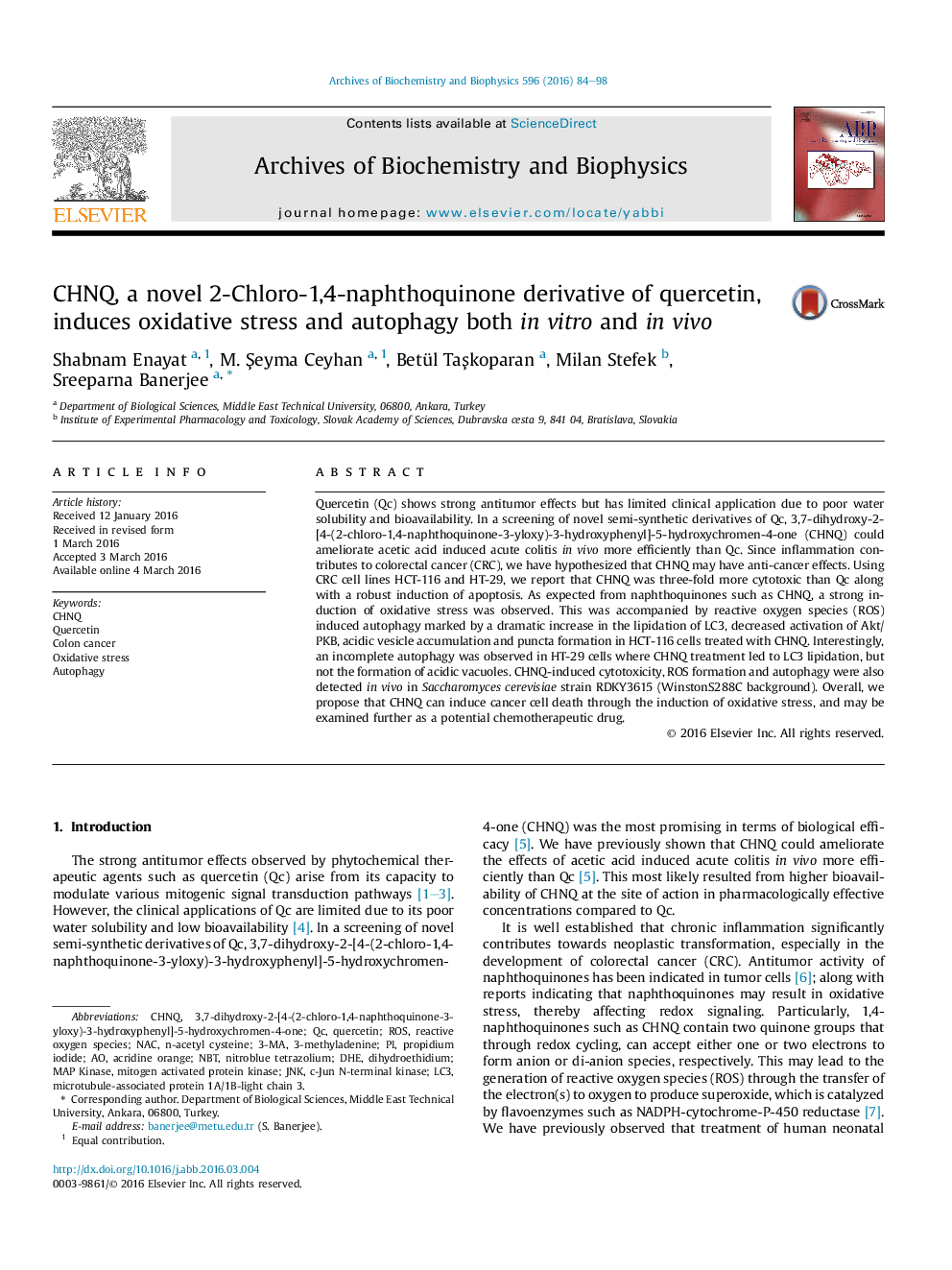| کد مقاله | کد نشریه | سال انتشار | مقاله انگلیسی | نسخه تمام متن |
|---|---|---|---|---|
| 1924773 | 1536307 | 2016 | 15 صفحه PDF | دانلود رایگان |

• CHNQ, a quercetin derivative, showed higher cytotoxicity in colon cancer cell lines.
• CHNQ reduced proliferation and induced apoptosis in colon cancer cells.
• CHNQ strongly induced the formation of reactive oxygen species and G2/M arrest.
• Robust ROS induced autophagy was seen in colon cancer cells treated with CHNQ.
• CHNQ treatment induced ROS and autophagy in S. cerevisiae in vivo.
Quercetin (Qc) shows strong antitumor effects but has limited clinical application due to poor water solubility and bioavailability. In a screening of novel semi-synthetic derivatives of Qc, 3,7-dihydroxy-2-[4-(2-chloro-1,4-naphthoquinone-3-yloxy)-3-hydroxyphenyl]-5-hydroxychromen-4-one (CHNQ) could ameliorate acetic acid induced acute colitis in vivo more efficiently than Qc. Since inflammation contributes to colorectal cancer (CRC), we have hypothesized that CHNQ may have anti-cancer effects. Using CRC cell lines HCT-116 and HT-29, we report that CHNQ was three-fold more cytotoxic than Qc along with a robust induction of apoptosis. As expected from naphthoquinones such as CHNQ, a strong induction of oxidative stress was observed. This was accompanied by reactive oxygen species (ROS) induced autophagy marked by a dramatic increase in the lipidation of LC3, decreased activation of Akt/PKB, acidic vesicle accumulation and puncta formation in HCT-116 cells treated with CHNQ. Interestingly, an incomplete autophagy was observed in HT-29 cells where CHNQ treatment led to LC3 lipidation, but not the formation of acidic vacuoles. CHNQ-induced cytotoxicity, ROS formation and autophagy were also detected in vivo in Saccharomyces cerevisiae strain RDKY3615 (WinstonS288C background). Overall, we propose that CHNQ can induce cancer cell death through the induction of oxidative stress, and may be examined further as a potential chemotherapeutic drug.
Figure optionsDownload high-quality image (193 K)Download as PowerPoint slide
Journal: Archives of Biochemistry and Biophysics - Volume 596, 15 April 2016, Pages 84–98